José Mourinho’s sacking at Tottenham Hotspur may not have come as a surprise to many people. Perhaps the timing of the sacking was odd considering Spurs were set to play the Carabao Cup final a week later against Pep Guardiola’s Manchester City, however, the circumstances were certainly not unconventional with Tottenham sitting in seventh.
What most definitely was a surprise though was his appointment at AS Roma merely two weeks later, a return to the country where he managed to win a historic treble with Internazionale in 2010.
Mourinho may have lost his title as ‘the Special One’ in England due to his recent failures, particularly in Manchester and in London, but the Italian press still holds him in huge regard for what he achieved over a decade ago. A leading column on La Gazzetta dello Sport the day the Portuguese manager was appointed read, “a Special coup that will relaunch the club, the city, and Italian football”. Corriere dello Sport described the new manager as the ‘King of Rome’.
His arrival is much anticipated and the Giallorossi have already begun talks with multiple clubs to try and sign the players that Mourinho needs to be a success, including Rui Patricio from Wolves and Arsenal’s Granit Xhaka. All eyes will definitely be on Roma this season to see how they fare under their new esteemed manager.
This article will be a tactical analysis in the form of a scout report of how AS Roma will look under Mourinho. It will be an analysis of their potential tactics and how ‘the Special One’ will look to plug their weaknesses and utilise the team’s strengths.
Probable formation and starting lineup
As much as his reactive approach has never changed throughout his managerial career at the highest level, Mourinho’s formation choice has also rarely changed. The 58-year-old has mainly used the 4-3-1-2, 4-3-3, and 4-2-3-1 at every club he has been with.
At Porto, the 2004 UEFA Champions League winners used a 4-3-1-2. In his first stint at Stamford Bridge, Chelsea used a 4-3-3, whilst at Internazionale the Nerazzurri used more of a 4-3-1-2 in his first season but in the treble campaign, they had switched to a slightly lob-sided 4-2-3-1. At Real Madrid, Chelsea for a second time, Manchester United and Tottenham Hotspur, 4-2-3-1 was the main choice of formation.
Going off this evidence, an educated guess would be that Mourinho will also use a 4-2-3-1 in the Italian capital. However, looking at the current crop of players, disregarding any transfer rumours, a 4-3-3 makes slightly more sense. Here are two alternative lineups in both the 4-2-3-1 and 4-3-3 formations.
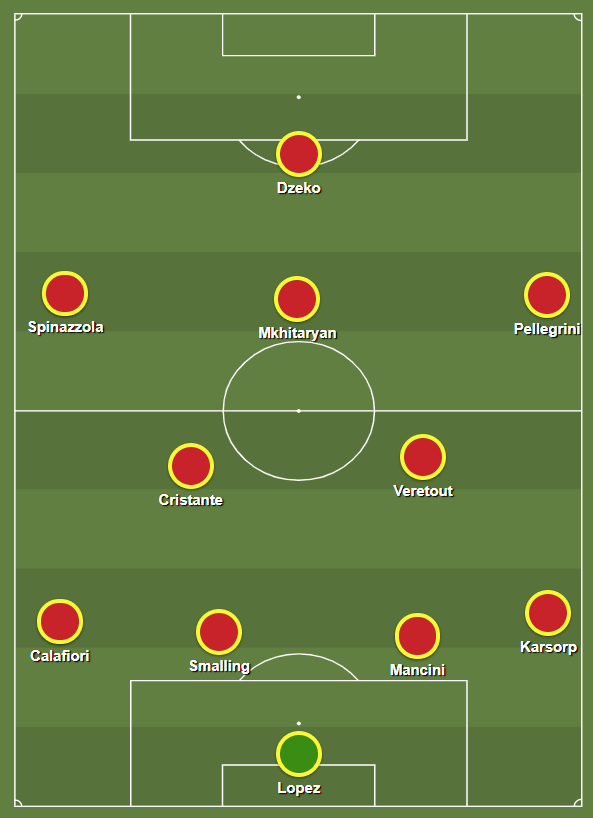
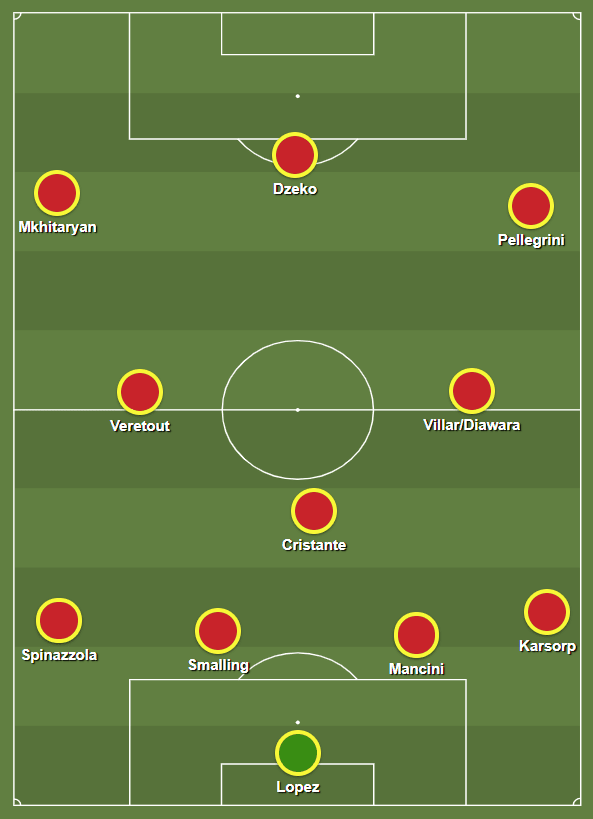
In the 2020/21 season, Paulo Fonseca only deployed a back four formation in 16 percent of Roma’s games in all competitions. A back three variation was used 84 percent of the time so a switch to a back four may need heavy coaching by Mourinho and his staff members.
The 3-4-2-1 was the Giallorossi’s most used formation, being deployed in 64 percent of the team’s matches but given Mourinho’s track record, the use of a back three is unlikely to be carried on by the new manager.
Looking at the personnel in the images, there are some solid players in the squad to form the base of Mourinho’s team, including Edin Dzeko who may be willing to give one more year to the Italian giants after he fell out with Fonseca last season.
Bryan Cristante is another Mourinho-esque player. A very hard-working, intelligent, and tactically versatile midfielder, similar to Nemanja Matic. Henrikh Mkhitaryan and Lorenzo Pellegrini on the flanks are also capable of playing in central areas and so the Portuguese manager has quite a lot of flexibility with the pair in case a formation switch is needed such as a switch from a 4-2-3-1 to more of a 4-4-2 diamond.
Mourinho also has experience working with Chris Smalling at the back, having coached him from 2016-2018, but if reports are to be believed, the new Roma boss believes the backline is the weakest part of his squad and so it is likely that new defenders will be brought into the club.
Worrying signs already
A lot of work is needed for this squad to be back challenging for one of Serie A’s top four places. Interestingly enough, Roma are in an almost identical position to Tottenham Hotspur in terms of their league position from last season.
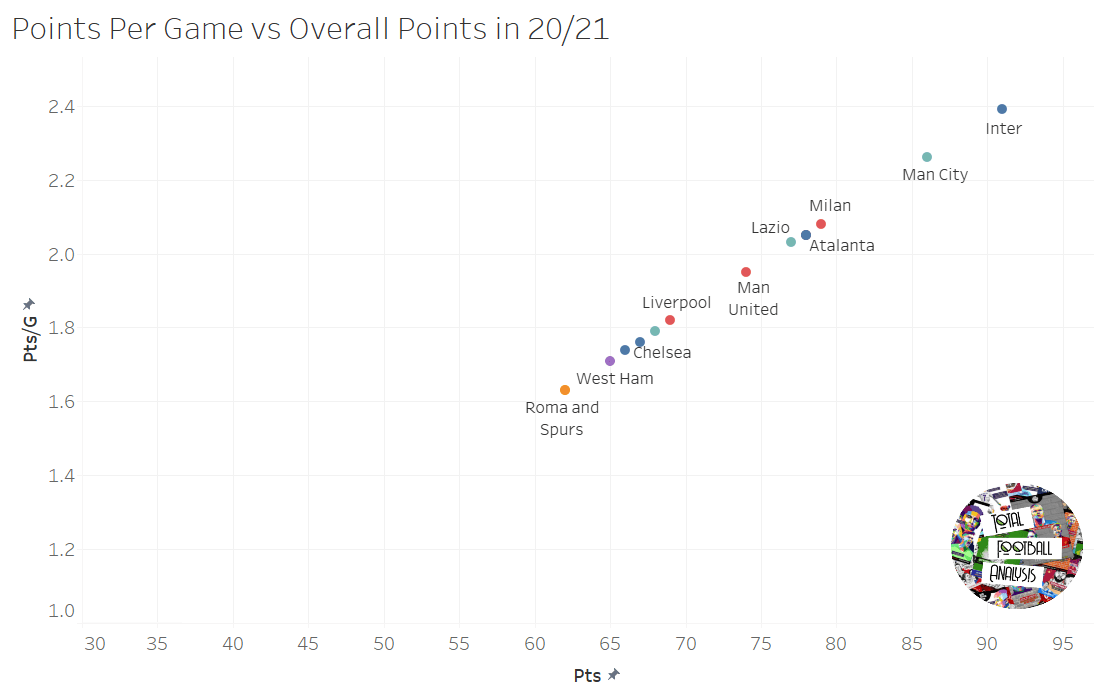
Both Roma and Spurs totalled 62 points in their respective league across the season, each finishing seventh too and qualifying for the inaugural 2021/22 UEFA Conference League. As the two clubs finished on the same number of total, their points per game was 1.63 per game.
Interestingly for Tottenham, their points per game were lower than 1.63 prior to Mourinho’s sacking. Interim boss Ryan Mason upped their numbers and so Spurs would have potentially been the lowest team out of the top seven teams from both the Premier League and Serie A in this data visualization as opposed to the joint-lowest.
The question would be, considering Mourinho was in charge for the majority of Spurs’ horrendous season in 2020/21, is he the right man to revitalise Roma who are in an identical situation.
Also, the Portuguese boss has only managed to finish in the top four once since 2015, a second-place finish with Manchester United in 2017/18.
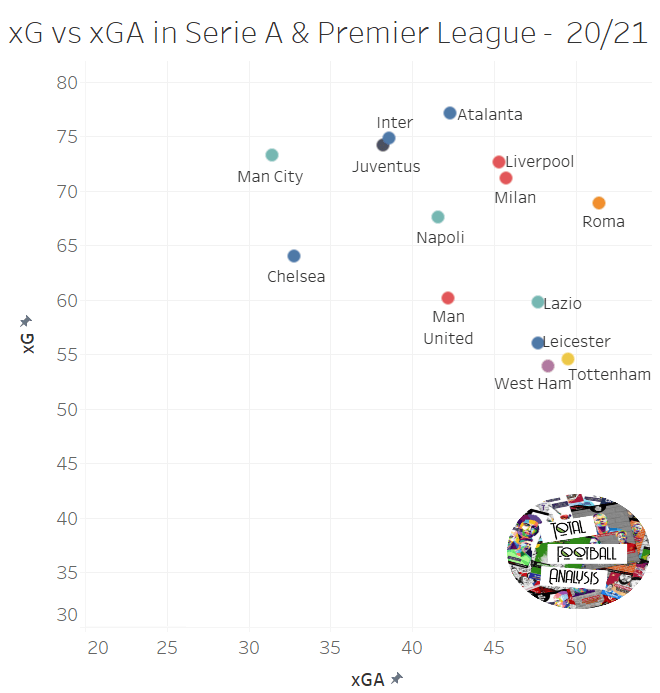
The second-most worrying aspect about Mourinho’s appointment at the Italian giants is his track record of playing rather reactive football. Reactive football typically produces a significant lack of goals compared to a more progressive system, although this is not always the case such as Mourinho’s Real Madrid outscoring Pep Guardiola’s Barcelona en route to their 2011/12 La Liga title.
Going off the evidence presented in the charts last season, Roma’s attacking output may see a significant drop off from last season. Whilst Fonseca’s football may have been defensively naïve at times, Roma were still one of the highest-scoring teams across all top five leagues with 68.
No Mourinho side has managed to score more than 68 goals since his 2014/15 Premier League winning Chelsea team. In fact, Mourinho’s Tottenham were one of the lowest-scoring teams to finish inside the top seven of both the Premier League and Serie A, with only David Moyes’ West Ham United below them.
Roma’s attack was one of the only reasons that the club finished in the top seven of the league with their defensive set-up letting them down massively. Under Mourinho, the goals will likely be massively reduced from their 2020/21 numbers which could potentially be detrimental unless he manages to also reduce the number of goals they concede to balance things out.
That being said, Tottenham had the second-worst defensive record out of the 14 teams listed above despite having much more quality in that department than Roma, so this is another worry for the fans of the Giallorossi.
Attacking tactics
José Mourinho’s sides have never been known for their fluid, possession-based style of football. The Portuguese manager does tend to frustrate teams by sitting in a low block and looking to transition quickly with fast players.
When hitting the opposition on the break, Mourinho puts heavy emphasis on verticality. This essentially means that the passes must always be forward as opposed to being backward or laterally.
Backwards and sideways passes can be useful to maintain possession or potentially setting the ball so that the receiver can then play long, but they tend to slow down a counterattack, and since Mourinho is an advocate for the 13-second attacking transition, his sides opt to mainly play vertically.
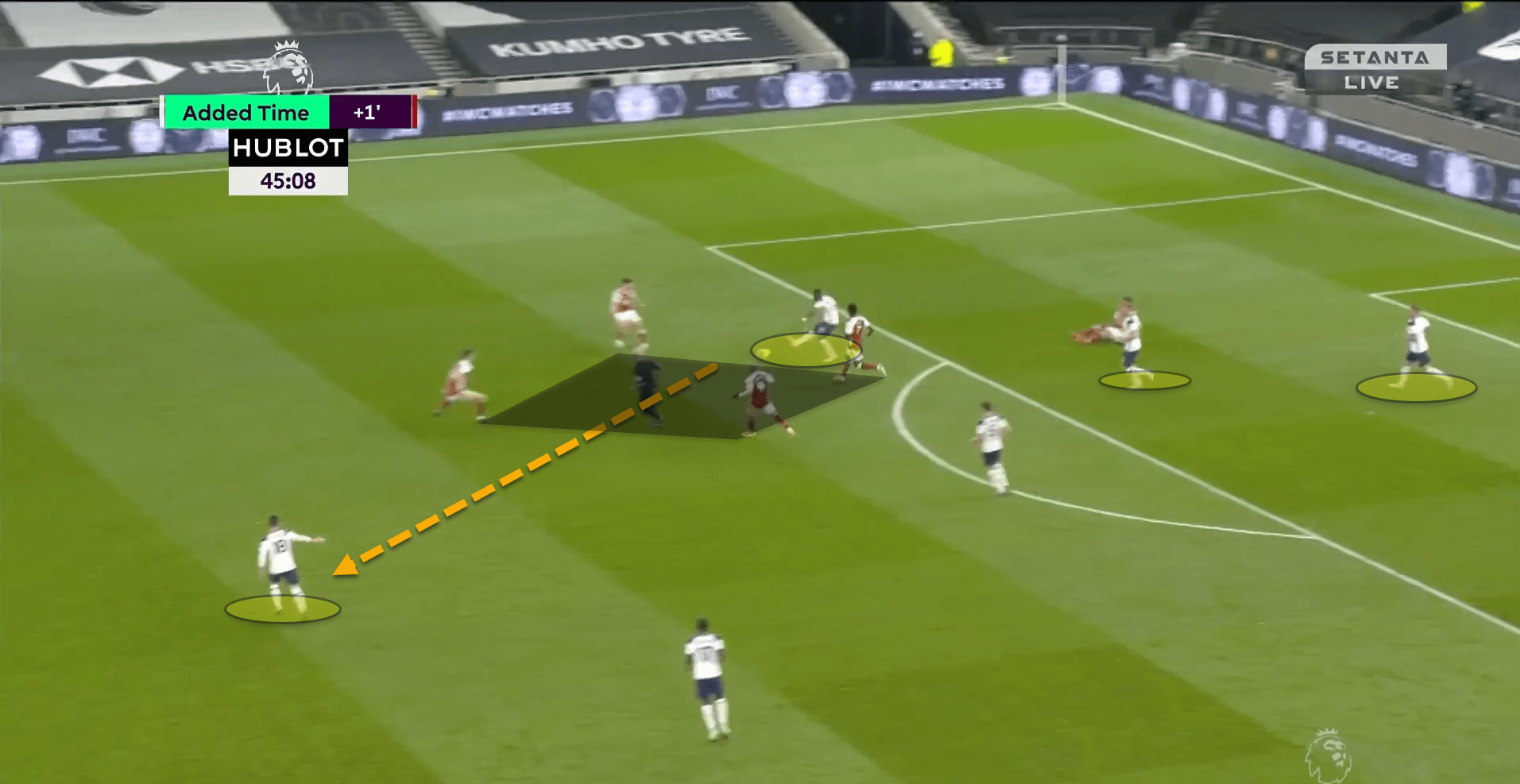
In this image, we can see an example of Mourinho’s Spurs using verticality in a counterattack in a deep area of the pitch. Tottenham had just regained possession and multiple Arsenal players swarmed Serge Aurier to counterpress to win the ball back early and high.
The Ivorian fullback had the option to play it backwards to the goalkeeper, or the two players highlighted in the image, which would have slowed the attack down. However, he played a vertical pass through Arsenal’s counterpress and into the feet of Giovanni Lo Celso, who later played another vertical pass into the feet of Heung-Min Son before the Korean international found Harry Kane on the overlap to finish the move off and score.
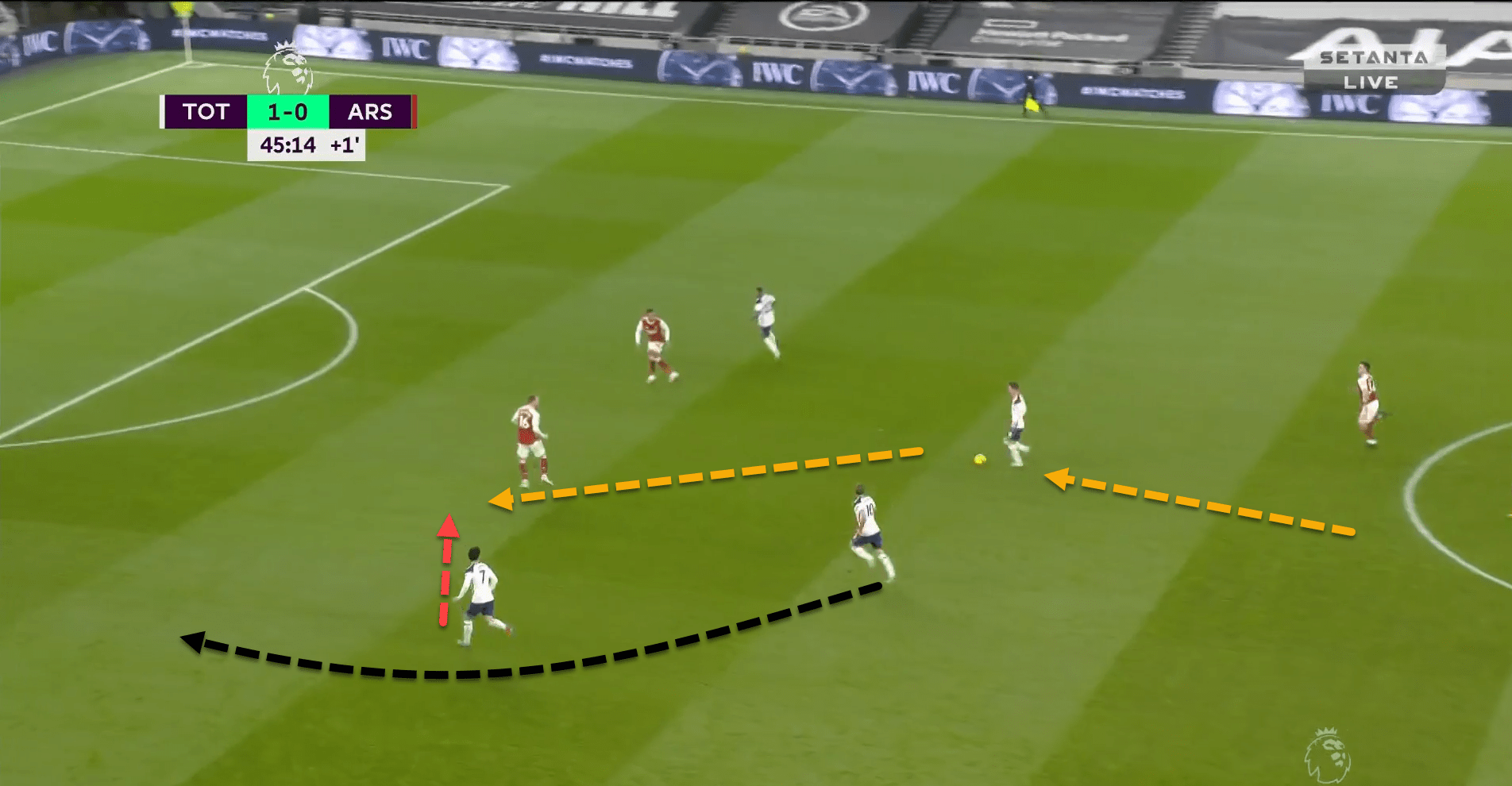
The attack took three passes and approximately 13 seconds to complete and was one of Spurs’ best counter attacking goals of the Mourinho era.
These rapid and vertical counterattacks are an attacking variation that viewers will see a lot of with AS Roma under their new manager. The issue is that the Italian side does lack quite a bit of pace in their forward line. Whilst they possess quality with the likes of Dzeko, Mkhitaryan, Pedro, and Pellegrini across the forward line, it is not exactly blessed for pace.
Trying to hit the opposition on the break from deeper areas as can be seen in the previous two images, can be extremely difficult. Mourinho had this issue at Manchester United in his first season with Zlatan Ibrahimovic up top, usually with Juan Mata and Marcus Rashford flanking him.
It is expected that the Portuguese manager will be able to dip into the transfer market to try and sign players who are capable of playing more on the counter.
Directness in possession
Another key aspect of José Mourinho’s teams is their directness in possession. With the massive Bosnian up front, this could be a suitable attacking route for Roma under the 58-year-old.
Mourinho’s teams have never been known for their use of the build-up phase, often bypassing it and going long from the goalkeeper. Whilst this remained true, at Tottenham, we saw a somewhat varied approach at times.
Spurs would play short in the build-up phase from the goalkeeper and circulate the ball around the backline before going direct. They did this by setting themselves up in a 4-2 shape. This meant that Spurs built up in a back four, keeping the fullbacks low, and then had a double-pivot behind the opposition’s first line of pressure.
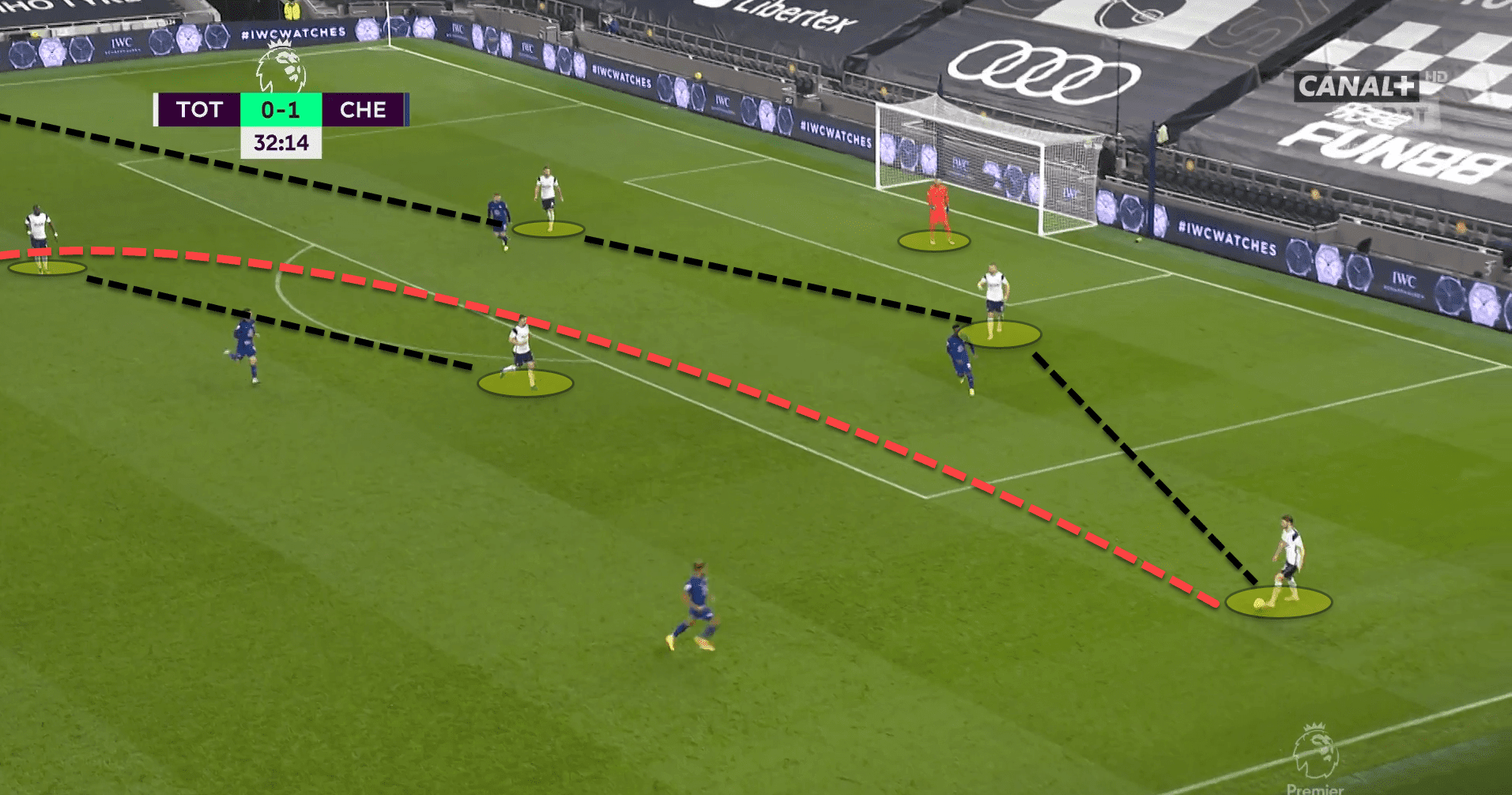
Here is an example of Spurs setting up in this offensive structure. This is particularly useful against teams who like to press high. Mourinho instructs the fullbacks and double-pivot to drop low which means that the opposition will be forced to press higher up the pitch, stretching the gap between the opponent’s backline, midfield, and forward line.
Then, one of Spurs’ defenders would play long, typically to Harry Kane who would drop short, dragging a defender out. As the opposition was stretched vertically in their press, there were less of their players close by to win any second balls.
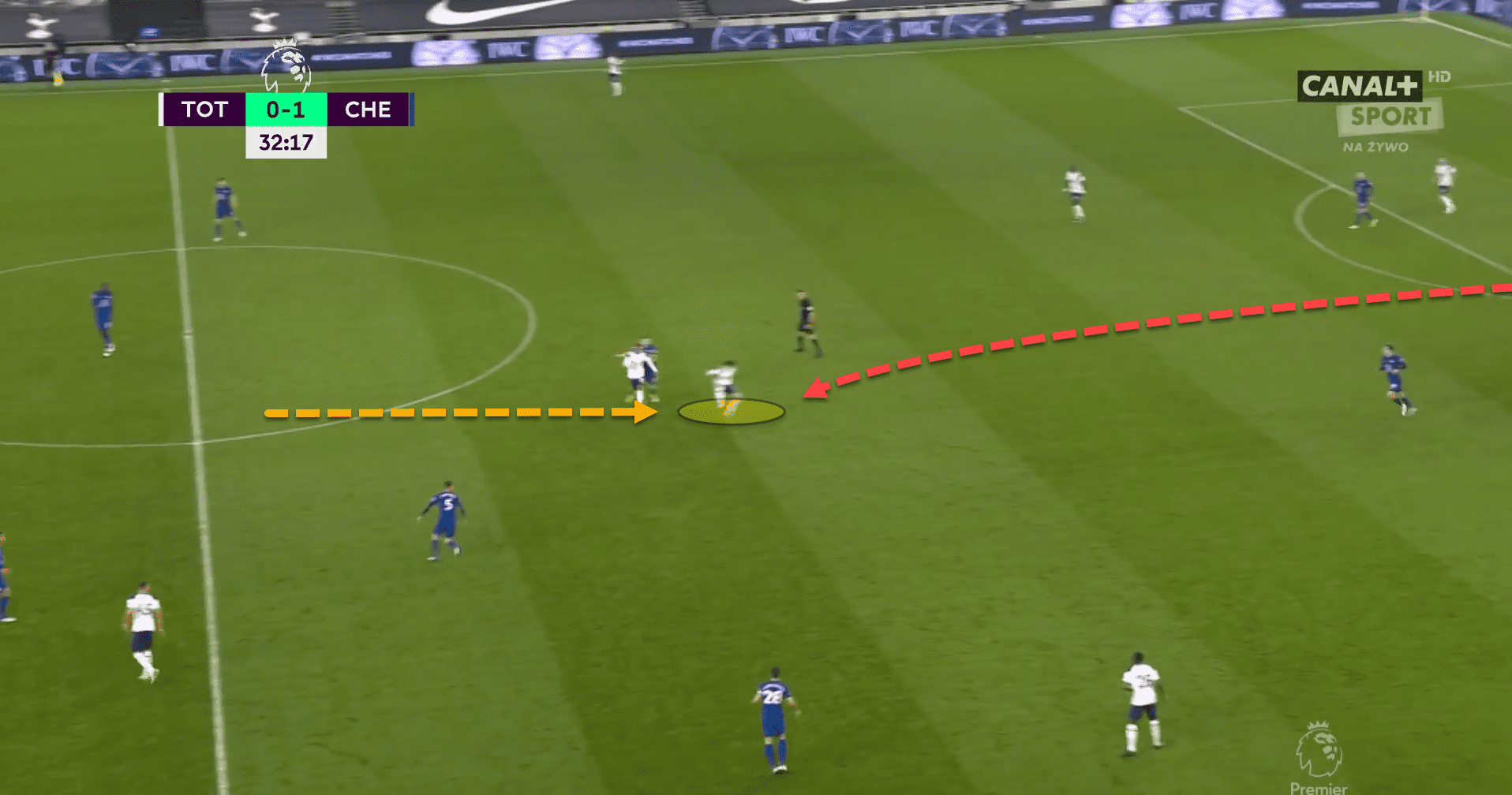
As can be seen from this image which preceded the previous one, Son, who was occupying the centre-forward role at the time, dropped deep to receive a direct ball over Chelsea’s press and was able to turn and run at the backline.
Under Fonseca, when Roma deployed a 4-2-3-1, they used a very similar build-up structure and so the players will already have an idea of what Mourinho will want them to do.
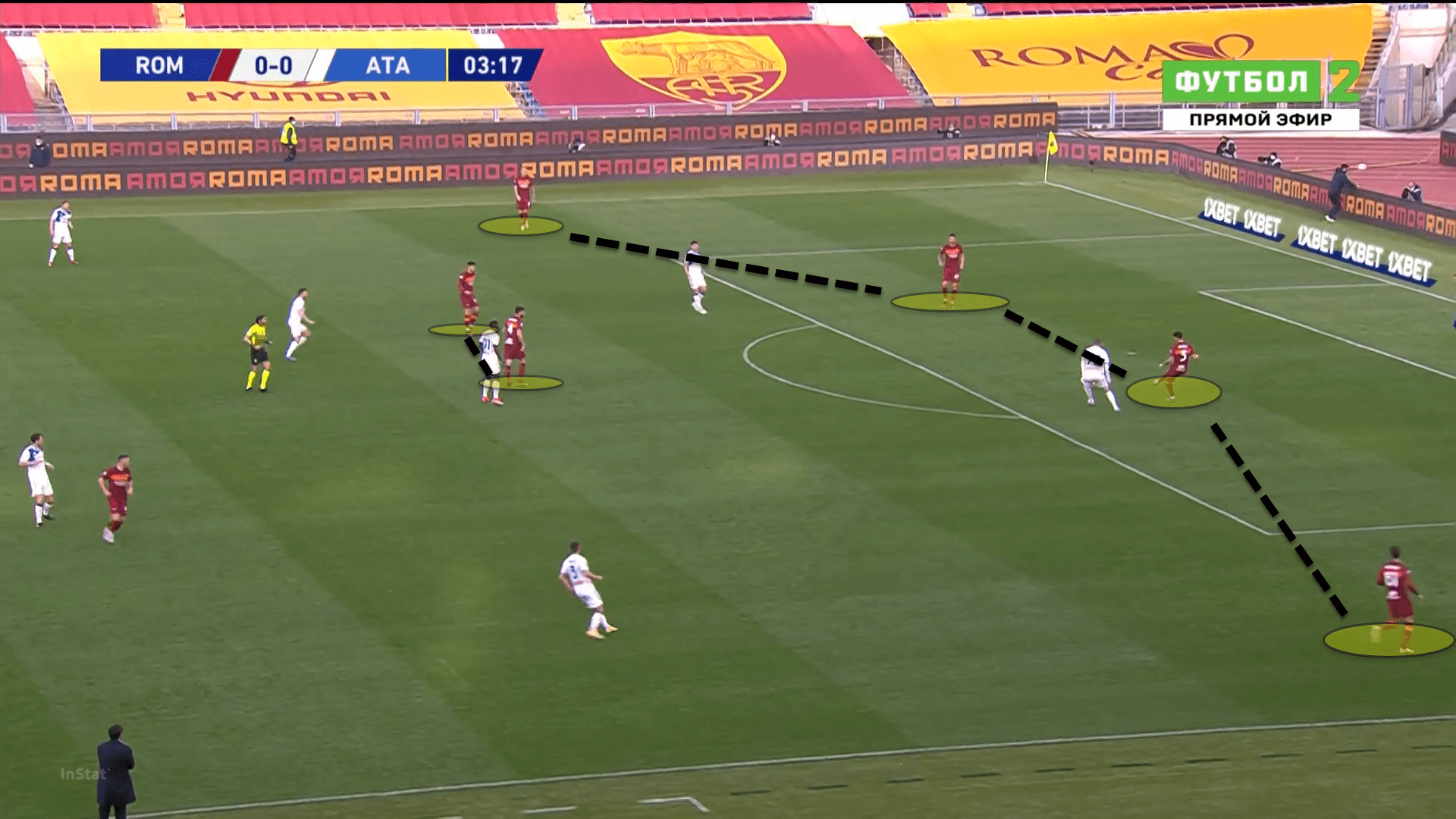
This could potentially be a useful way for Roma to get high up the pitch using the quality of their personnel to do so such as Dzeko.
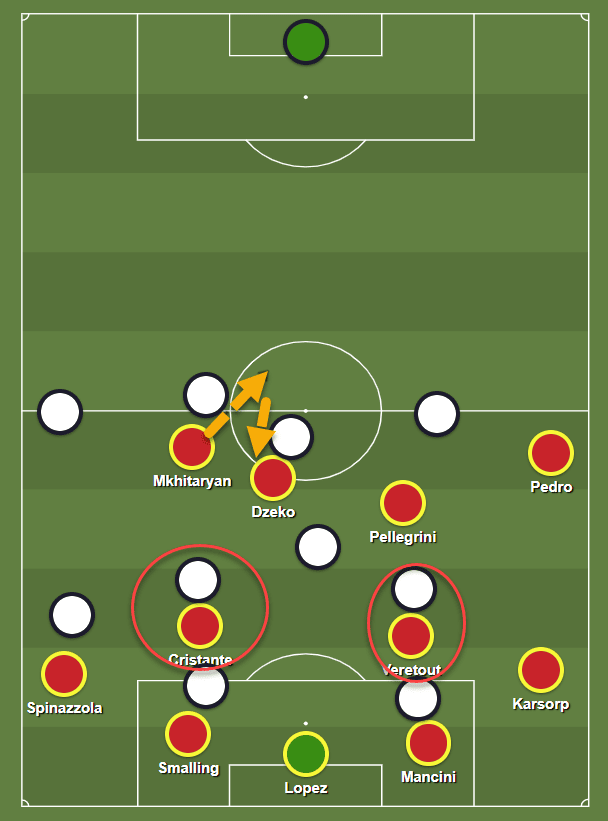
Also, Mourinho is an advocate for having a tall and physically strong centre-forward up top, capable of dropping deep and dragging defenders out of position for wingers to then exploit. This quite a common long ball variation and is certainly one that the Portuguese manager has emphasised over the years.
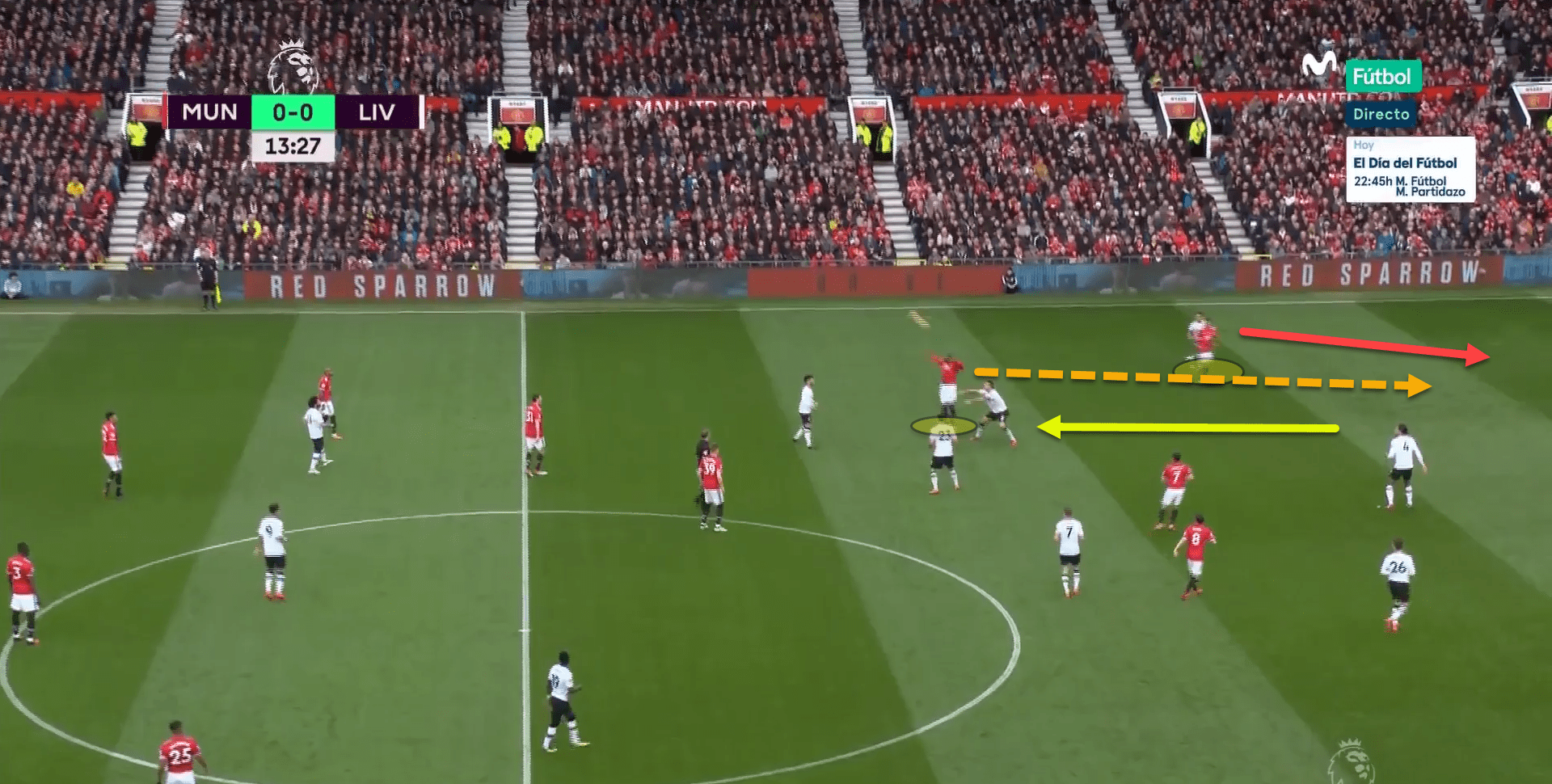
Having a centre-forward who is good in the air with a ball-near quick winger, it can be a deadly combination for breaking through the opposition’s backline.
In the game in the previous image, Manchester United used this long ball variation twice against Jurgen Klopp’s Liverpool to great success, scoring two goals within ten minutes of each other from an almost identical situation.
Pedro is a player who excels at making diagonal runs between the fullback and centre-back and so Dzeko and he could be a potentially deadly combination.
Defending in a mid-to-low block
Spurs were not a side who pressed too intensely or too high under José Mourinho. Across both campaigns with the Portuguese manager, the London club tallied an average Passes allowed per Defensive Action (PPDA) per 90 of 13.48, one of the lowest in the Premier League.
In the 2020/21 season, Spurs’ PPDA was higher than the 2019/20 campaign with 14.36, meaning that Tottenham pressed even less in Mourinho’s second season.
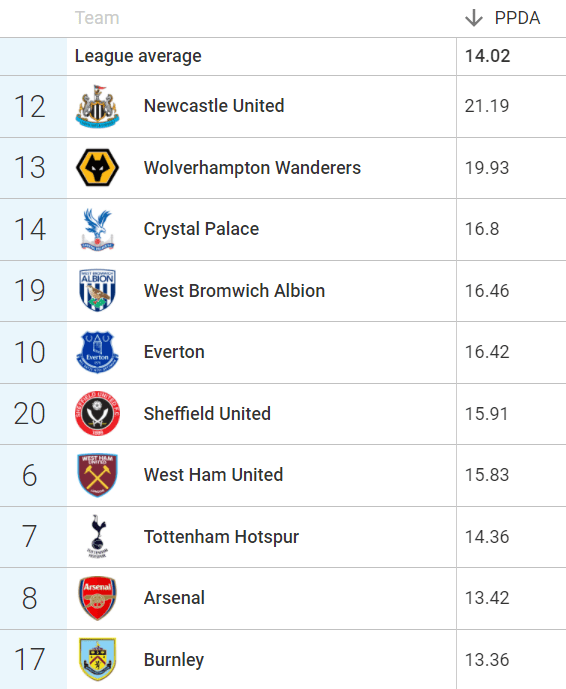
Typically, Spurs would allow the opposition to have easy access out of the build-up phase and instead would look to drop off and consolidate in a mid-block to prevent the team in possession from playing through them. Mourinho always instructed his side, in theory, to be compact between the lines and to maintain proximate connections to one another so that no player will ever be isolated in a 1v1 situation, particularly in the centre of the pitch.
When in a mid-block, Spurs’ shape would look like a 4-2-3-1 and this would not change until the opposition managed to progress the ball into a more dangerous area of the pitch and Mourinho’s side were forced to defend in a low block.
The centre-forward was tasked with pressing the two centre-backs when the team in possession were in the progression phase. However, the number 9, mainly Kane, would close off access to one centre-back by angling his press.
Then, Mourinho instructed his players to deal with the opposition’s forward passing options in a mix of a man-oriented and zonal fashion.
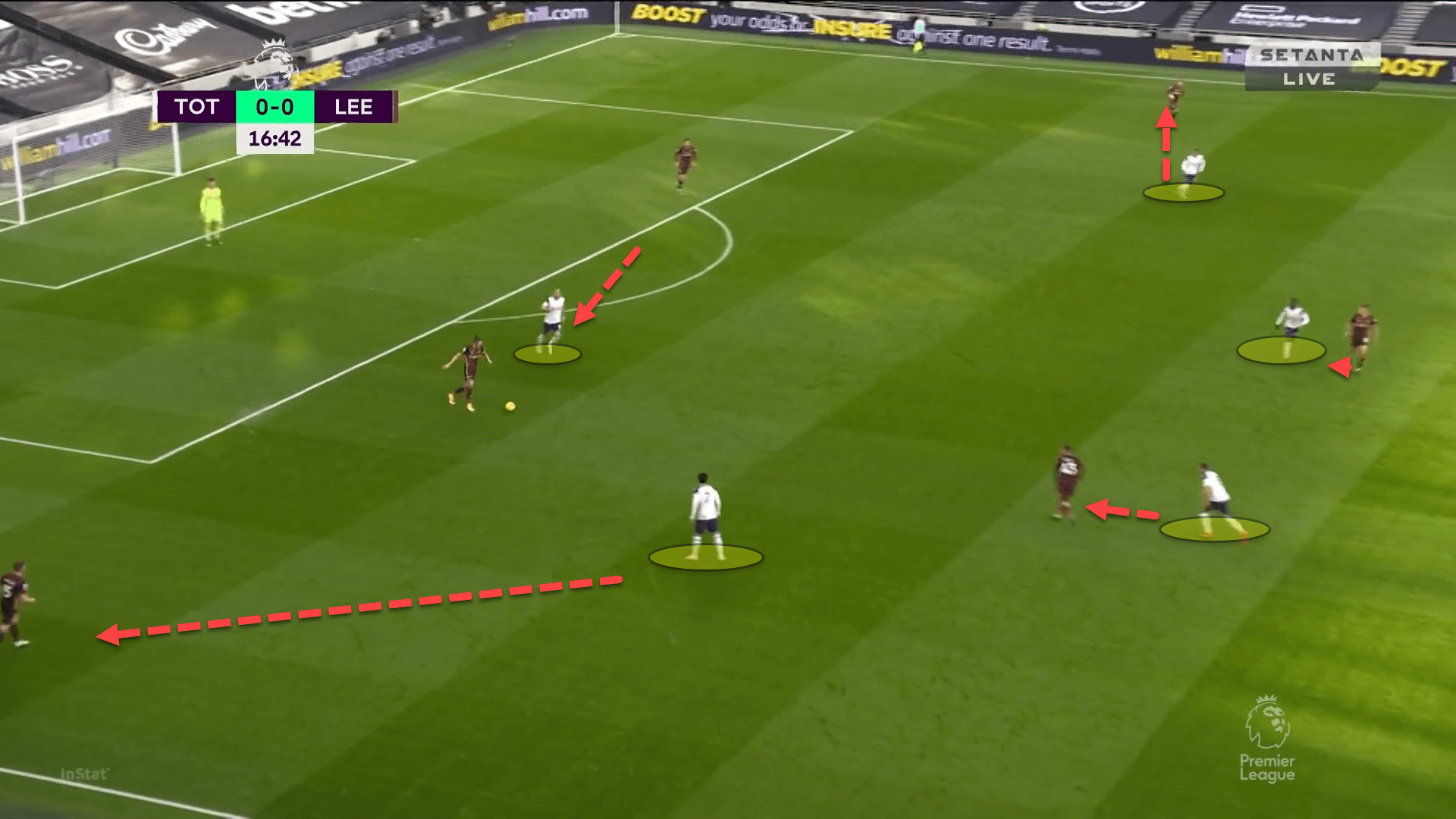
Roma will likely use a defensive block as such until they are forced to drop into a more compact 4-4-2 where they then will play zonal, another archetype of a José Mourinho team.
With defensively solid, energetic, and tactically intelligent midfielders such as Cristante and Veretout, this could be a good approach for Roma to take under Mourinho, providing they are using more of a 4-2-3-1.
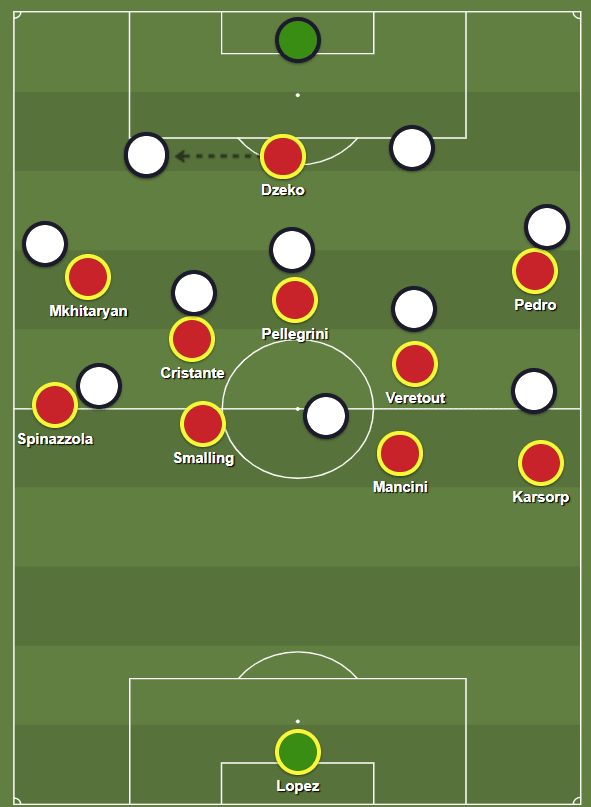
That being said, Mourinho is known for altering his side’s tactical setup depending on the opposition. In this match against Leeds, Spurs’ mid-block was quite wide to deal with the constant switches of play from Marcelo Bielsa’s men. The 4-2-3-1 approach also suited them against Leeds because the formation matches up perfectly with a 4-1-4-1.
However, against a double-pivot, their approach tends to change again. Most teams, who use a double-pivot when they have established possession, build-up in a 3-2 structure with the double-pivot behind the opposition’s first line of pressure, such as Thomas Tuchel’s Chelsea or Janne Anderson’s Sweden.
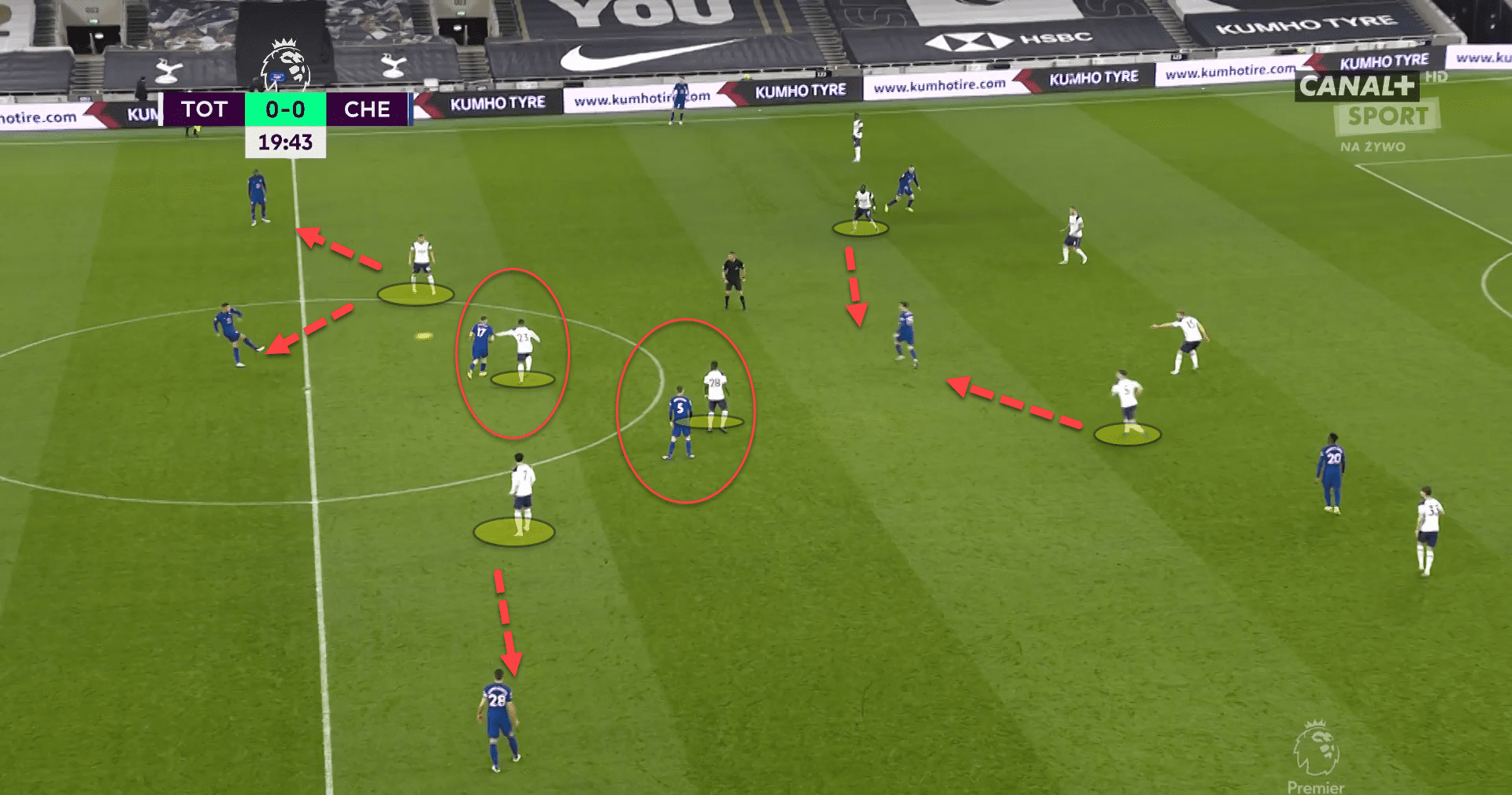
Here is how Mourinho’s mid-block looked against Chelsea in a Premier League bout back in February. The shape was still a 4-2-3-1 but it was more lob-sided and the front four played man-to-man whilst the double-pivot were tasked with picking up players who would drop in between the lines.
Bergwijn, playing as a right-winger, was instructed to come inside and mark Mateo Kovacic with Tanguy Ndombele on Jorginho. Heung-Min Son and Carlos Vinicius would collectively press the back three.
This is just an example of how Mourinho changes his side’s defensive approach from game to game and tailors it to the opposition’s strength, contrasting their set up against Leeds to their set up against Chelsea.
Whilst this is a reactive approach and may not be healthy in modern football, some structure is desperately needed at Roma and one thing that is guaranteed with Mourinho is that defensive structure will be brought to the club.
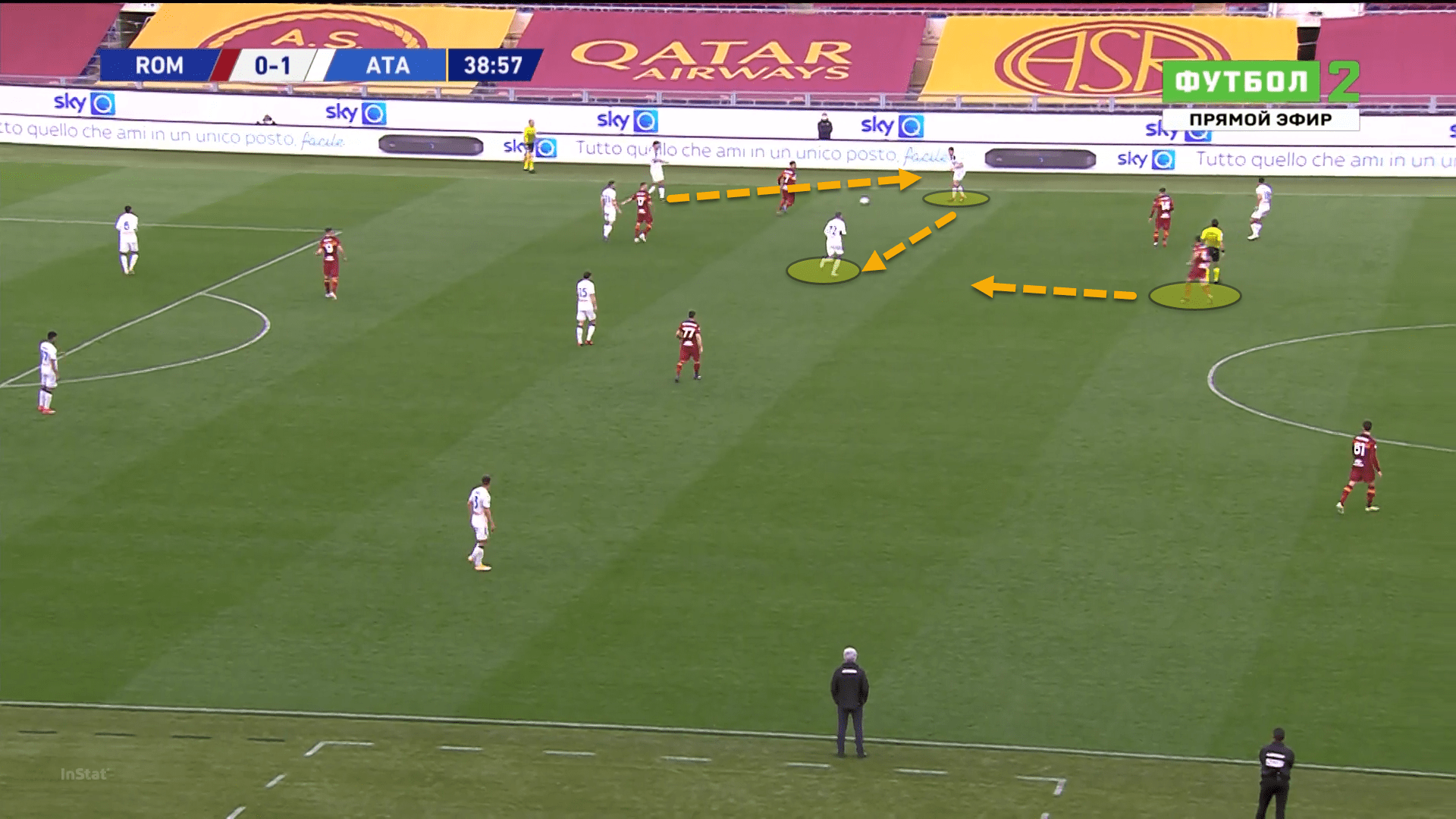
Here is an example from one of the final games under Fonseca this season against Atalanta. Roma are applying a mix of a man-oriented and zonal high press but are doing so without any intensity, urgency, or quality and Atalanta find it ridiculously easy to play out from it, taking out multiple Roma players in the meantime and exposing the backline.
As already stated earlier in the article, perhaps if Mourinho can get some defensive discipline into the team and much-needed structure, Roma will leak less goals and the lack of scoring chances may balance itself out.
Conclusion
This is one of the most exciting appointments in Serie A, arguably since the return of Antonio Conte in 2019 when he took over Inter from Luciano Spalletti. Like the Colosseum, Roma are a fallen giant. However, Mourinho’s credibility and ability in the modern game are also in free-fall and so perhaps the unlikeliest of appointments could work out to be a masterstroke.
This will be the first time that instant success is not a necessity since the Portuguese boss’ days at Uniao de Leiria back in 2002. The top four seems like an overwhelming success at the moment but if anybody is going to do it, it’s Mourinho.
As Corriere dello Sport wrote as their headline: ‘Un Re a Roma’ (A King of Roma). Let’s hope that Mourinho not only joins as a king, but he leaves as a king.

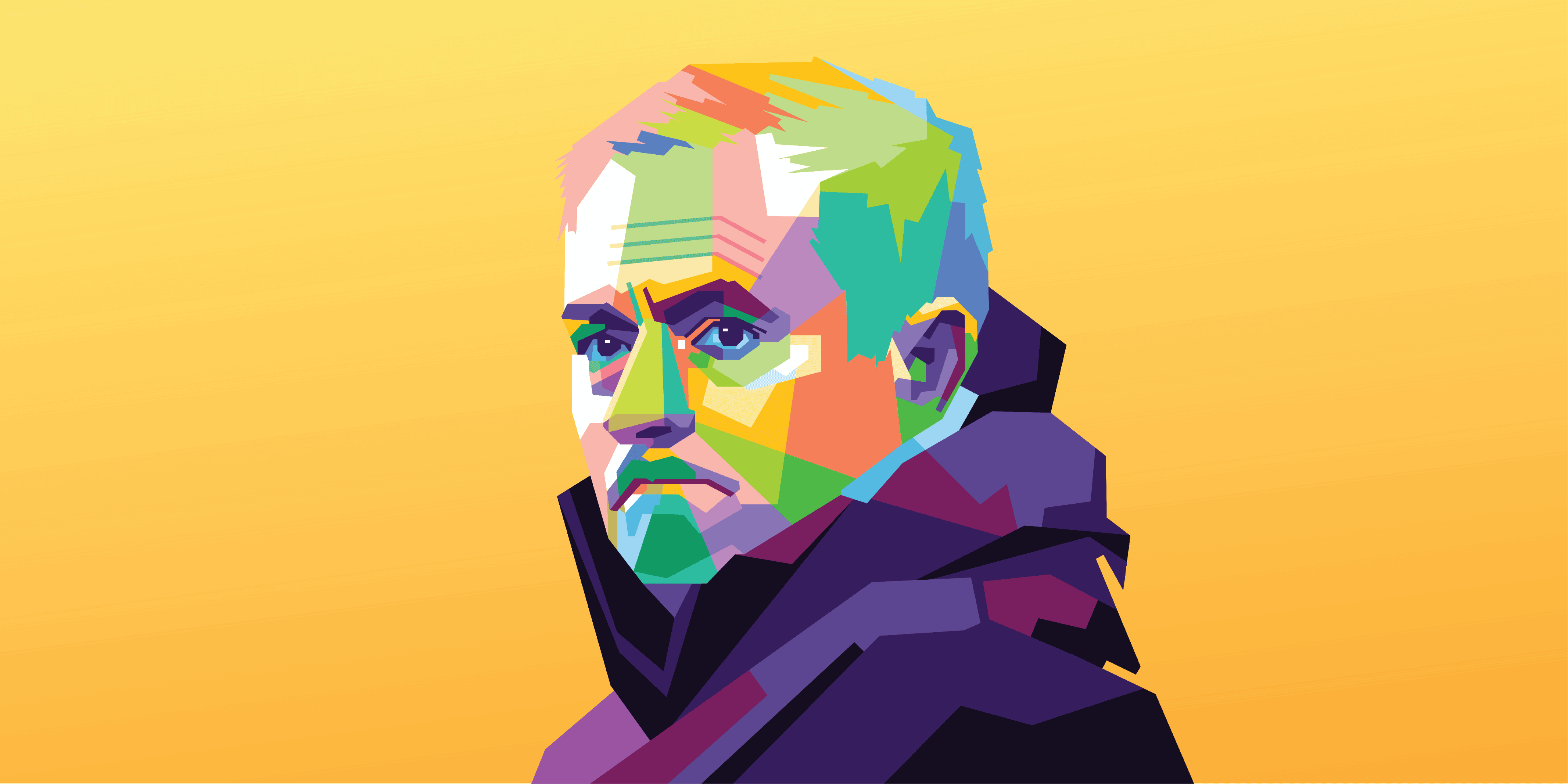




Comments